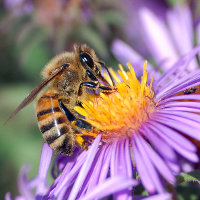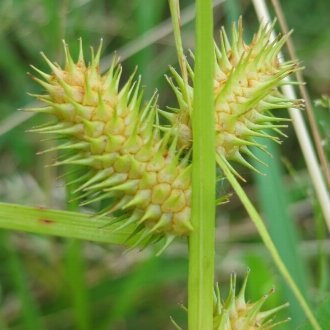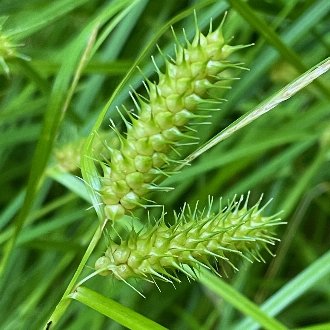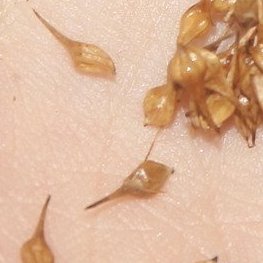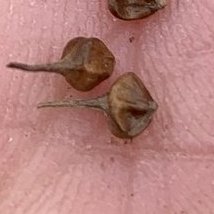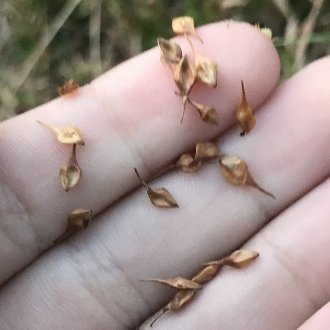Sallow Sedge vs Bailey's Sedge
This guide is under construction and has not been published yet. It may have errors. When in doubt, double-check other sources for definitive ID.These two sedges of the Vesicariae section are visually-similar and are often next to each other in botanical keys. Both prefer wetlands with acidic soils. They are usually easily distinguished by spike dimensions and leaf width. C. lurida has a much wider range, extending farther in all directions, ranges to lower elevations, and is found in a wider range of habitats including disturbed and anthropogenic wetlands. C. baileyi is restricted to the Appalachians and areas nearby, at elevations 200m/650ft and up, mostly higher.
Sallow Sedge (Carex lurida) | Bailey's Sedge (Carex baileyi) |
Spikes are wider (usually 15–22mm, rarely as short as 12mm) and shorter relative to their width (usually less than 2.5 times as long as wide.) Photo © Tom Field, CC BY 4.0. | Spikes are narrower (usually 9–14mm, rarely as long as 15mm) and longer relative to their width (usually 2.5-3.5 times as long as wide.) Photo © Tom Scavo, CC BY 4.0. |
Widest leaves average wider (usually 4.5-13mm wide, rarely as narrow as 4mm) (ruler shows centimeters) Photo © John Baur, CC BY 4.0. | Widest leaves are consistently narrower (2.4-4mm wide, rarely as wide as 5mm.) Photo © naturalist charlie, CC BY 4.0. |
Beaks average shorter relative to the perigynia (seed) bodies, although with some overlap. Photo © Alex Karasoulos, CC BY 4.0. | Beaks average longer relative to the perigynia bodies. Photo © naturalist charlie, CC BY 4.0. |
Perigynia are larger, typically 6.5-10.8mm long by 2-3.5mm wide, with little overlap in total length. Photo © Alex Karasoulos, CC BY 4.0. | Perigynia are smaller, typically 4.8–6.5mm long by 1.8–2.7mm wide. Photo © naturalist charlie, CC BY 4.0. |
Additional Notes
Most keys reference the relative length of the beaks to perigynia bodies as one of the various characteristics distinguishing these two species. However, due to the perigynia structure, especially on C. lurida, where the perigynia body gradually tapers to the beak, it is not immediately apparent where to stop measuring the body and start measuring the beak. Subjectivity in this cutoff can lead to wildly disparate measurements, including ones that fall well outside the range quoted in most sources (which cap the ratio of beak to body at 0.9 in C. lurida, i.e. depending on how you measure the beak you can get a ratio much larger than 1.)For this reason we have avoided giving a specific ratio. However, the qualitative difference is often still visible when looking at the perigynia.
References & External Resources
These short lists show only links helpful for ID. For a complete list of references and resources also covering other aspects of ecology, visit the links section of the full article on each plant, which is the first entry here.

